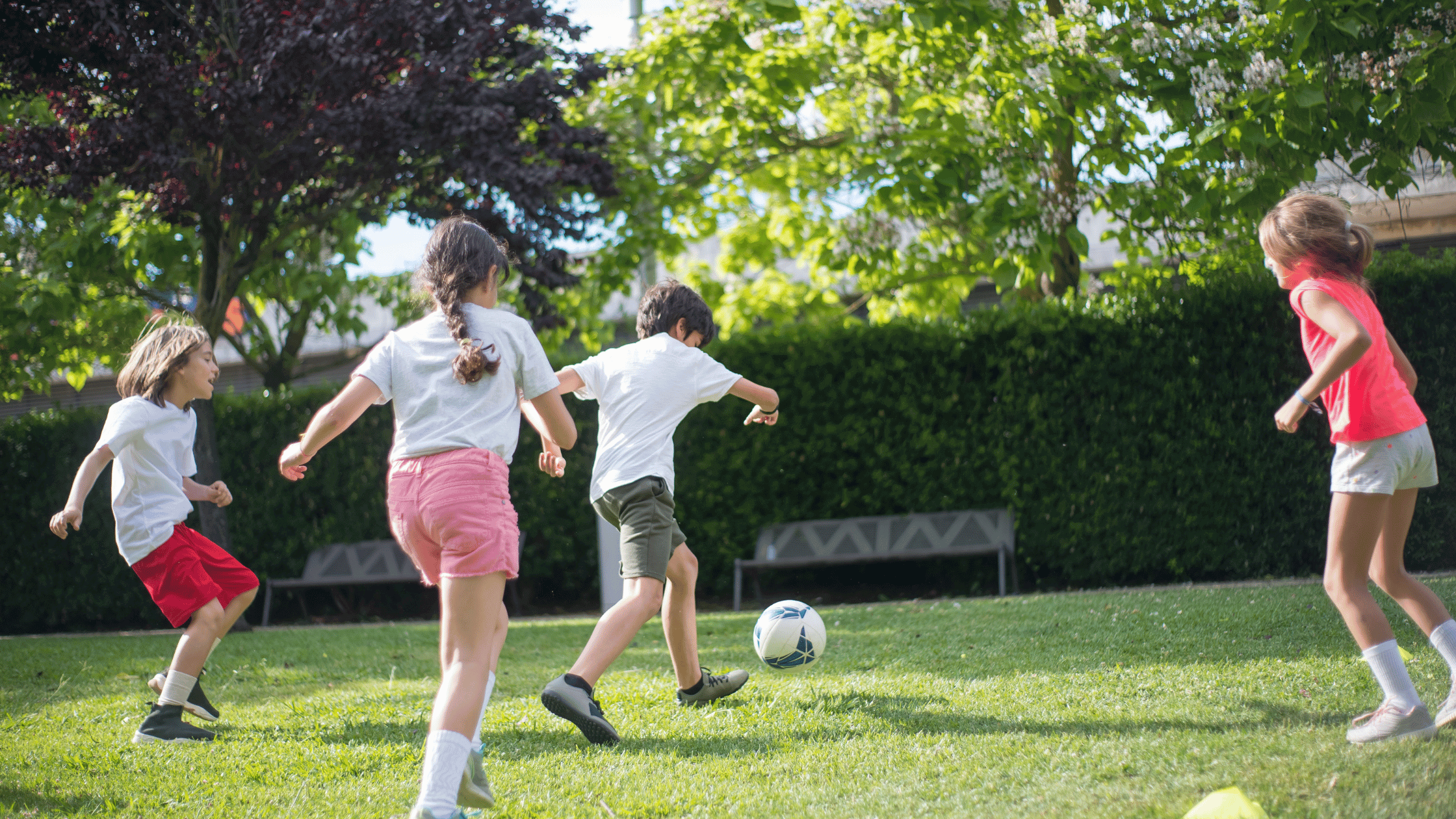How Do I Choose a Sport For My Child? A Case Study

Content Manager // EW Motion Therapy
Every parent wants to make the best decisions for their children, including where to send them to school and how to dress them. Many parents fret over choosing a sport for their child - how do you know from a young age which sport will “click” with them? Are they destined to be a star soccer player or a prima ballerina? Not every child will become a pro athlete, but sports help encourage work ethic and setting goals, essential life skills for any child.
You may want to start your child in a sport early to begin the character-building as soon as possible, but how do you determine which sport is best for your toddler? Providing a general answer to this question is impossible, as each child has unique talents and abilities. But to give some insight into the factors involved in this decision, we can look at a particular young athlete and how her parents decided to enroll her in the sport that would change her life: gymnastics. I sat down with EW Motion Therapy’s own Jon Delk, whose daughter Eloise had a prolific competitive gymnastics career through her freshman year in high school. Through his story as a physical therapist and a father, you can gain some insight into choosing a sport for your child and setting them up for success.
How do I know my child will thrive in sports?
As much as some parents want their children to be athletes, some kids are better suited for less competitive activities, depending on their personality. Jon saw Eloise’s headstrong, independent, and driven nature from when she was two years old, and he commented that she was an agile toddler, walking early and always running or climbing on something. If you have a headstrong toddler who can’t seem to sit still, maybe they should be doing something active.
If your child is incredibly independent, they may not thrive in a team environment. This is why it’s essential to let them try various sports to see what they enjoy. When Eloise was little, Jon and his wife Britt let her try T-ball, soccer, and lacrosse before she fell in love with a year-round tumbling class at age 4. They figured out through that process that Eloise preferred individual sports over team sports. Your child may be the same way, but you might not find out until you let them try a few different sports. For example, they could play basketball and soccer to be exposed to different environments and skill sets since soccer is on a field, basketball is on a court, and basketball is more hand-dominant, while soccer is foot dominant.
What if they get hurt?
A concern that many parents have is injury risk. This concern is valid - no one wants their child to get hurt, and some sports are arguably more dangerous than others, depending on many different factors. Little kids will likely be much safer in whatever sport they choose, but as your child gets older and more advanced, there is more opportunity for injury beyond scrapes and bruises. As Eloise advanced in her gymnastics career, Jon and Britt became more concerned by the potential for injury and the risks of overtraining and insufficient nutrition that plague many young female athletes. But they ultimately had to trust Eloise’s years of gymnastics experience to guide her in figuring out when it became too much - she is the only one inside her body. They also had to trust her coaches to keep her safe in the gym and not push her beyond what she could handle. As hard as it can be for some parents to give up that control of their child’s well-being, it is ultimately a good thing for many children and a vital step in their growing up to become physically and mentally healthy adults. You can examine the risks of different sports and begin by deciding the level of risk you want your child to be exposed to, then stay in communication with their coaches to ensure they are handling the demand of their sport. From there, it is up to the athlete.
What if they get burned out?
Burnout is all too common among athletes of any level. It can sideline an athlete faster than any physical injury, and for young female athletes specifically, trying to handle the stress and pressure of a sport with other responsibilities can have a massive impact on their mental health. With Jon and Britt’s support, Eloise retired from gymnastics after her first year of high school. They noticed that Eloise was and had been struggling in her relationship with gymnastics, and they sat down with her and reassured her that they were proud of her no matter what decision she made for her career. She found that trying to balance her training schedule with the demand of high school academics and social obligations was too much for her, and she was ready to be a regular high school kid. The most crucial thing Jon and Britt could do at that moment was support her decision, which is exactly what they did.
Regular check-ins with your athlete are an excellent way to listen to them and ensure they are happy in their sport. But if your child starts dreading going to practice or is not acting like themselves, it may be time to sit them down and check in. Do they just want to take a break, or do they want to quit their sport altogether? Children need to learn about following through with commitments, but not at the expense of their mental well-being. Every kid is different, so as long as you maintain an open dialogue with your child, they will feel safe letting you know what they need, like Eloise did with her parents.
How do I best support them?
Through our case study of Eloise and her gymnastics career, you may better understand what you need to consider when choosing a sport for your child and guiding them throughout their career. Sports can teach kids powerful life lessons: the more challenging things in life are worth working for, and it is up to you to work for it. As a parent, you only want the best for your child. Jon advises parents to remember that most kids will not grow up to be professional athletes - as long as you encourage physical activity and working toward goals, they will succeed in whatever sport they pursue. It’s also good to remember that most athletes get all of the coaching they need from their coaches, and as parents, you can sit back and enjoy watching them compete. This is much easier said than done for most of us. Though not intentional, parents can add to the pressure that young athletes experience in their sport. If they can enjoy what they do and not feel excess pressure from you to work even harder, they will more effectively avoid burnout and continue to succeed.
While your child’s coach will understand the physical demands needed to excel in a sport, seeking extra help outside of practice is sometimes beneficial. A physical therapist can be an excellent resource for examining your athlete’s body and providing sport-specific programming to ensure they can handle the demand and reduce injury risk. We enjoy doing this for our young athletes at EW Motion Therapy, whether they are runners, gymnasts, baseball players, golfer, or anyone in between. If you are curious about what else physical therapy could do for your child, click the button below to download our answers to 20 frequently asked questions.


